Red Figure Pot: Three men Carousing
1/15
Earn XP
Description and Tags
Name | Mastery | Learn | Test | Matching | Spaced |
|---|
No study sessions yet.
16 Terms

What type of pot is this and how tall is it?
An amphora, over 60cm tall, likely created as a showpiece
Who made this pot?
Euthymides
When was it made?
510-500 BC (Late 6th century)
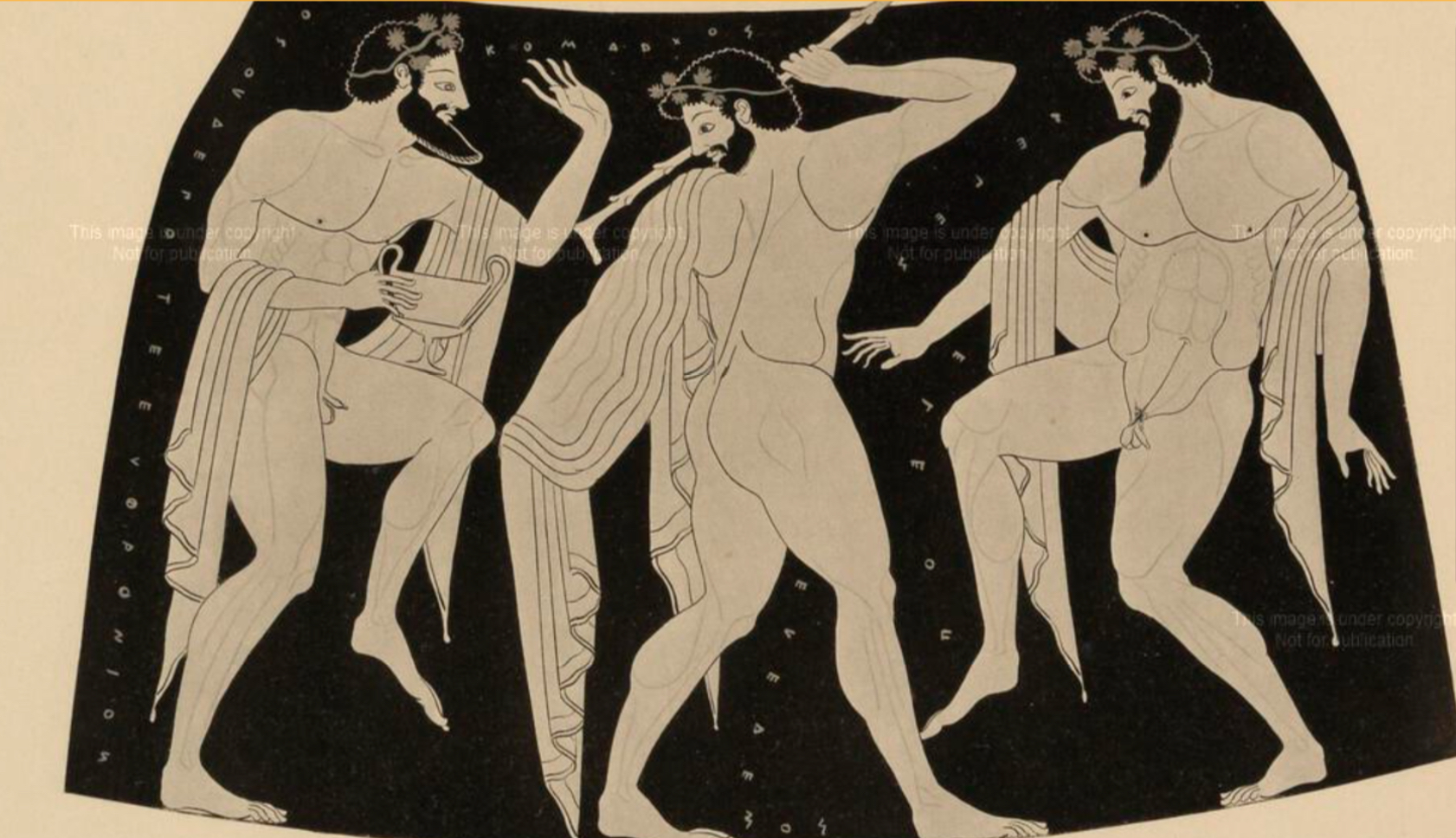
How does the artist create compositional symmetry?
The central figure is flagged by two figures facing inwards with almost entirely symmetrical poses e.g. both knees bent inwards in dance. The arching backs of the left and right figure mirror the curve of the amphora.
How is the rest of the pot’s composition aesthetically pleasing?
Jagged tooth pattern at the foot of the pot draw the viewers eyes upwards to the central narrative
The central narrative is framed vertically by a geometric chequered pattern and horizontally by oriental patterns of lotus buds and florals which frames the scene in a way full of variety
Ivy leaves on the handles
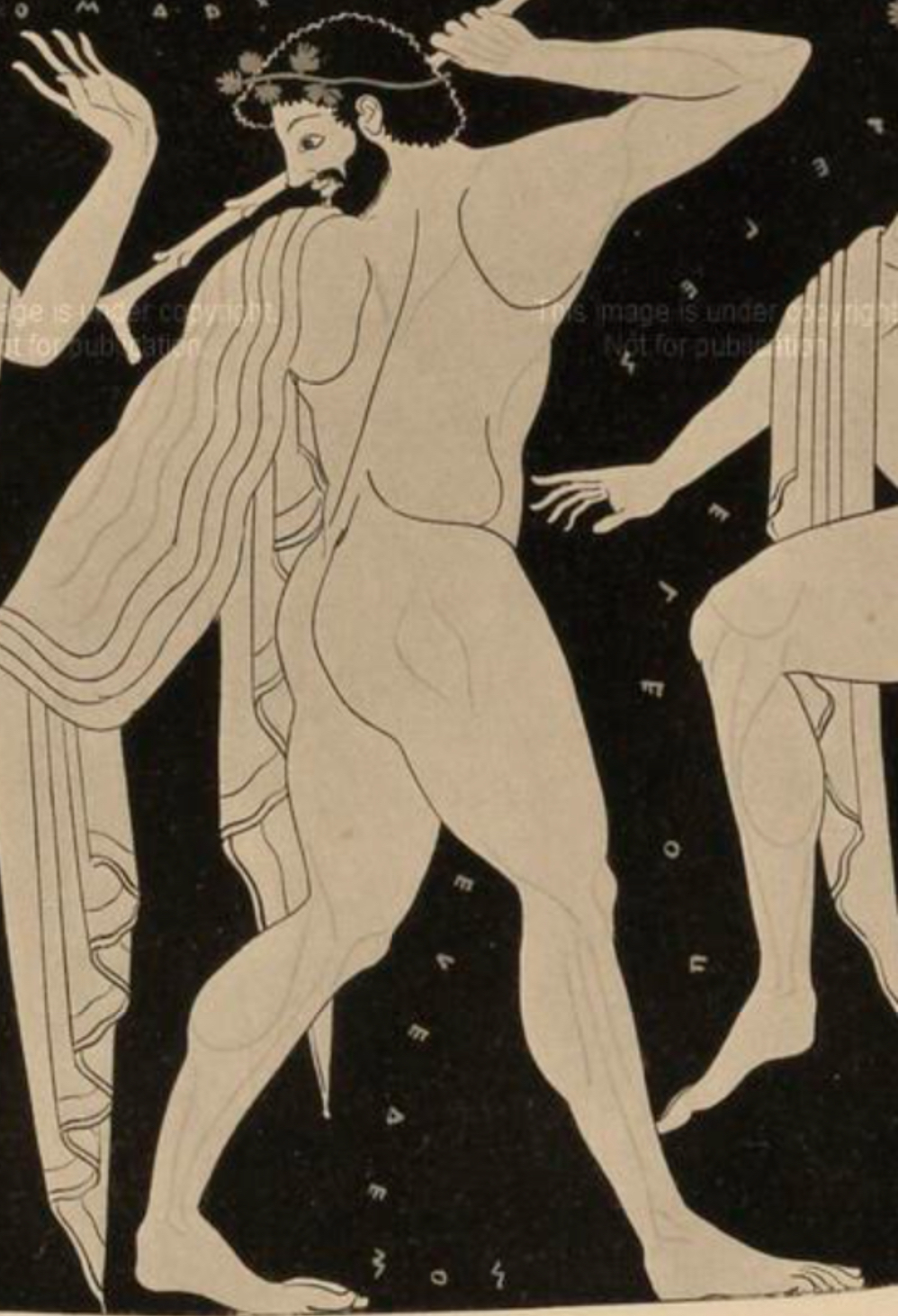
How is the pose of the central figure aesthetically pleasing?
Pose: legs in profile with head looking the other way, non vertical spine with asymmetric shoulder blades and ¾ buttocks → Very realistic, advancement towards naturalism
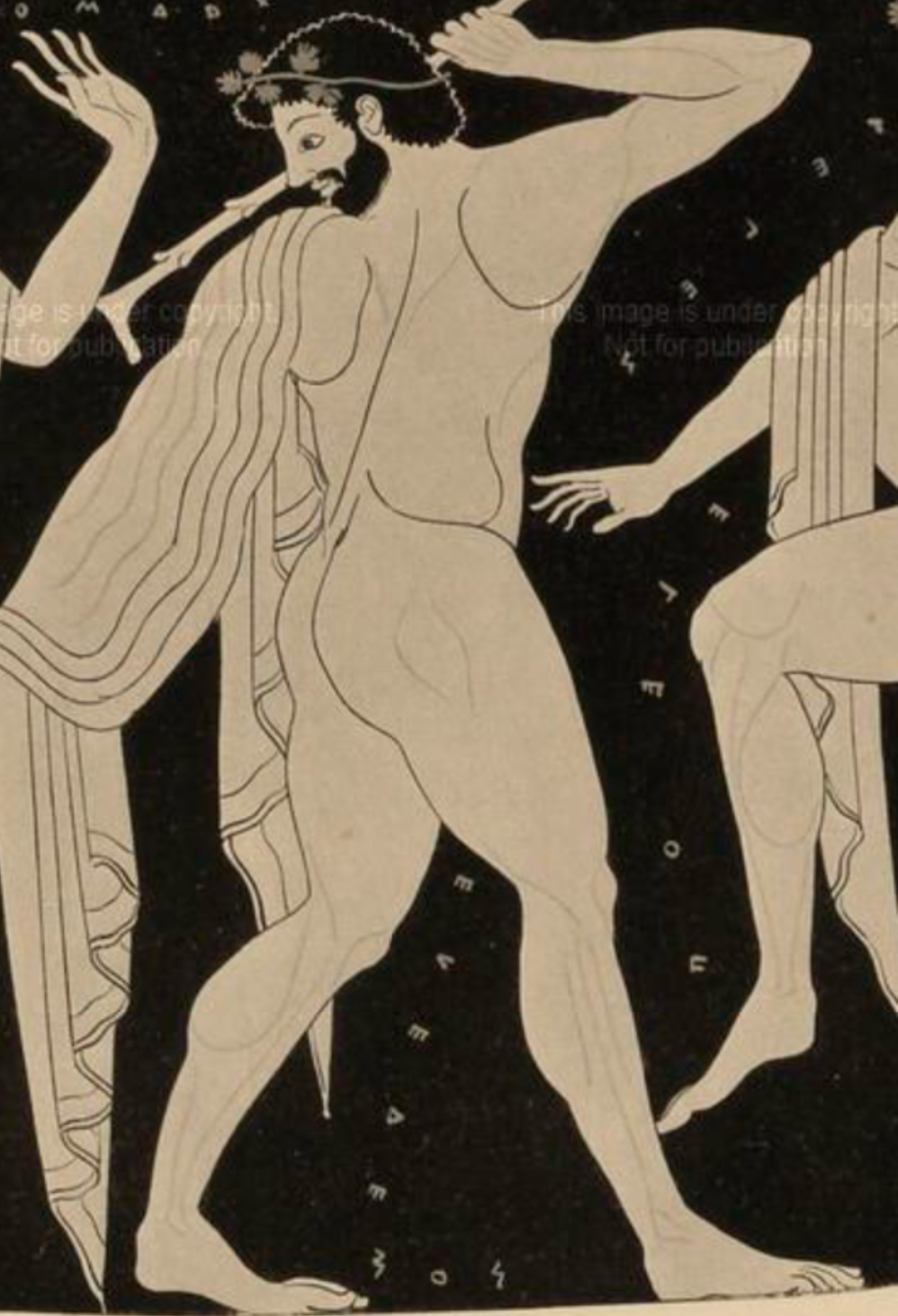
How does the drapery create depth?
The billowing cloaks move around the body reacting smoothly to the figures movement and anatomy e.g. the folds of the drapery and the roundness of the folds at the hem. This is much clearer in red figure than in black.
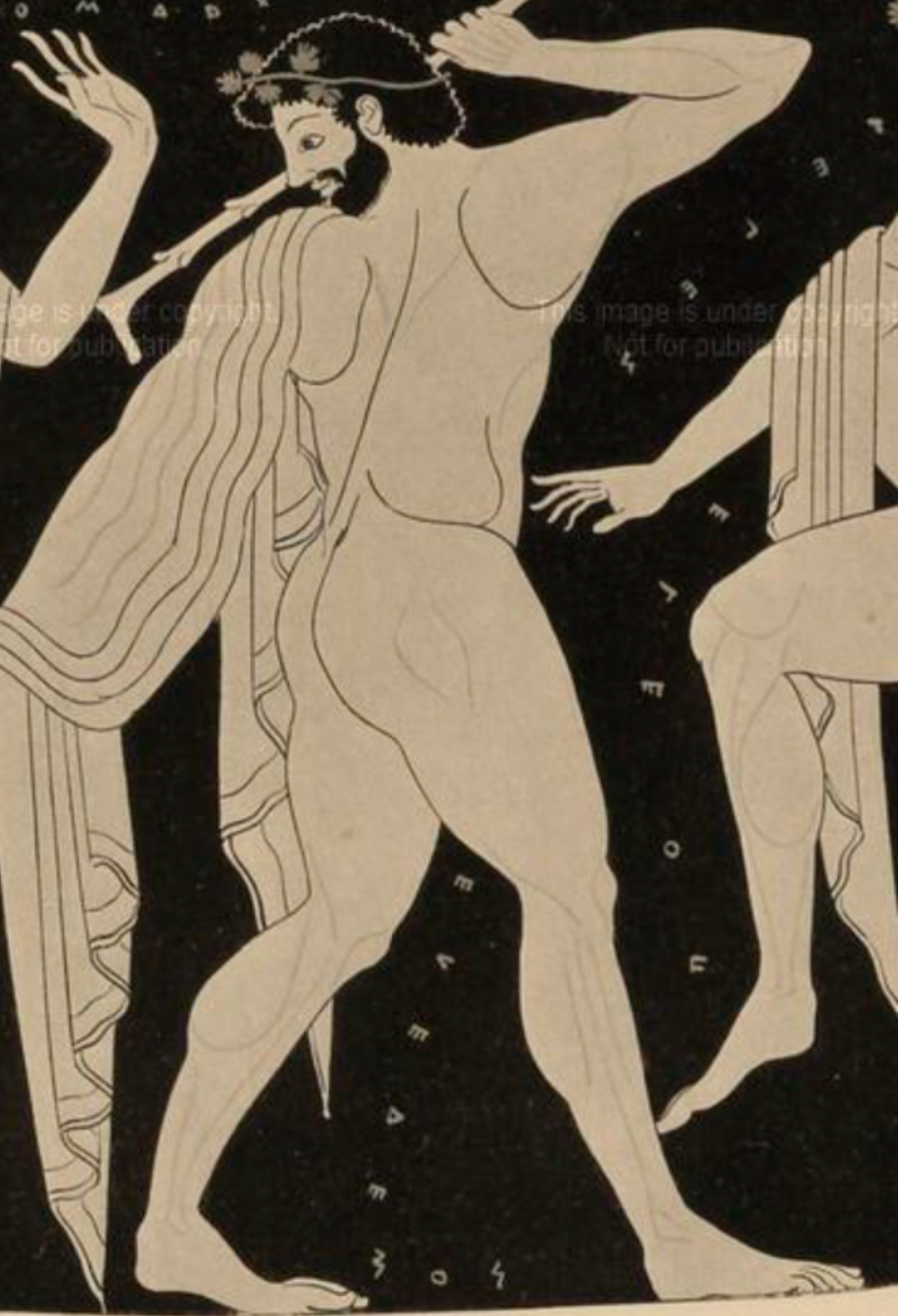
What technique does Euthymides use to make the anatomy appear more naturalistic?
The use of diluted slip and different brushes to create different shades and thickness of lines in order to display the veins and protruding bones in the figures calves and chest. This differentiates them from the full outlines of the figures bodies.
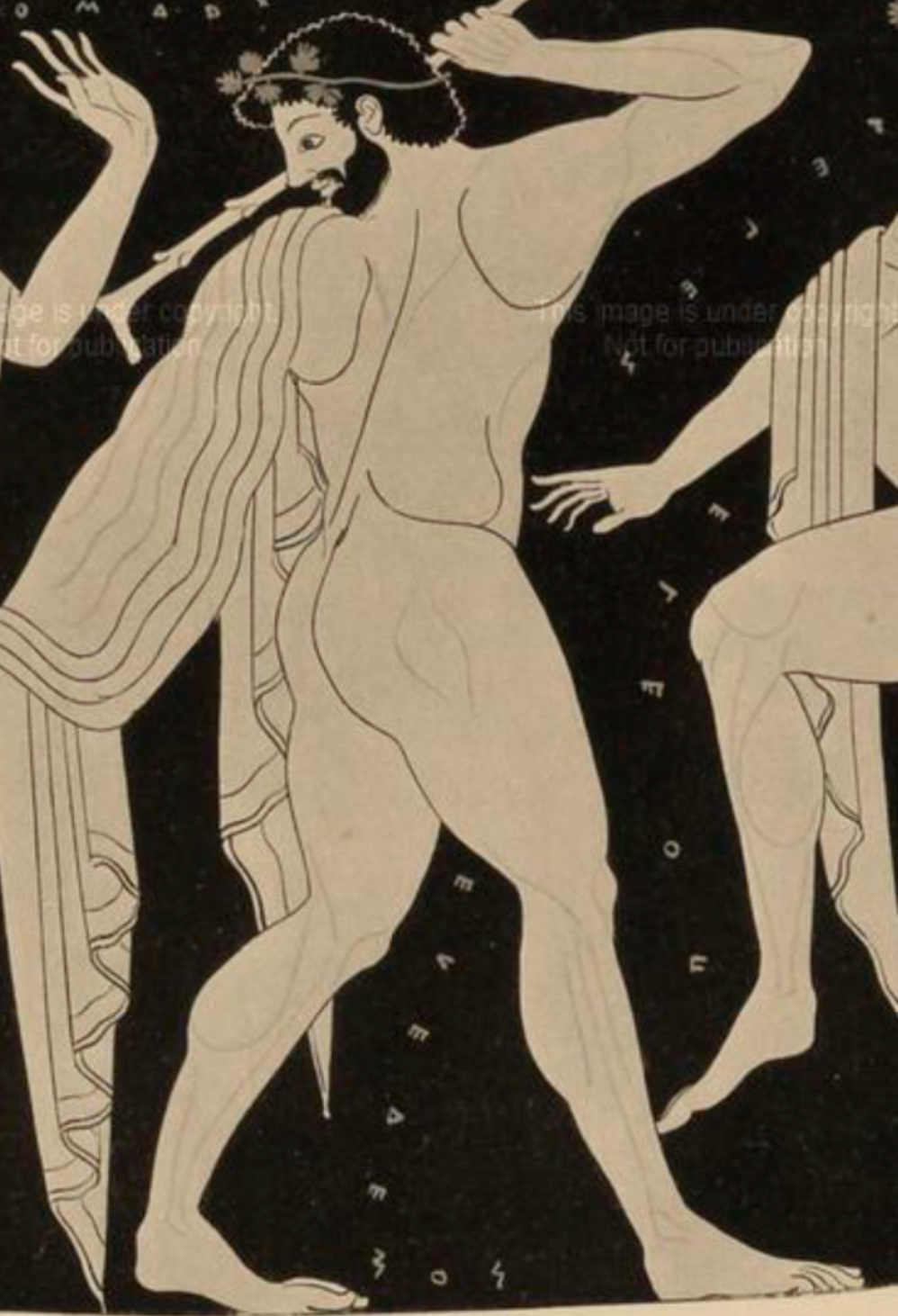
What other technique does Euthymides use to create depth?
Foreshortening in the arms and legs to create distance in the figures pose.
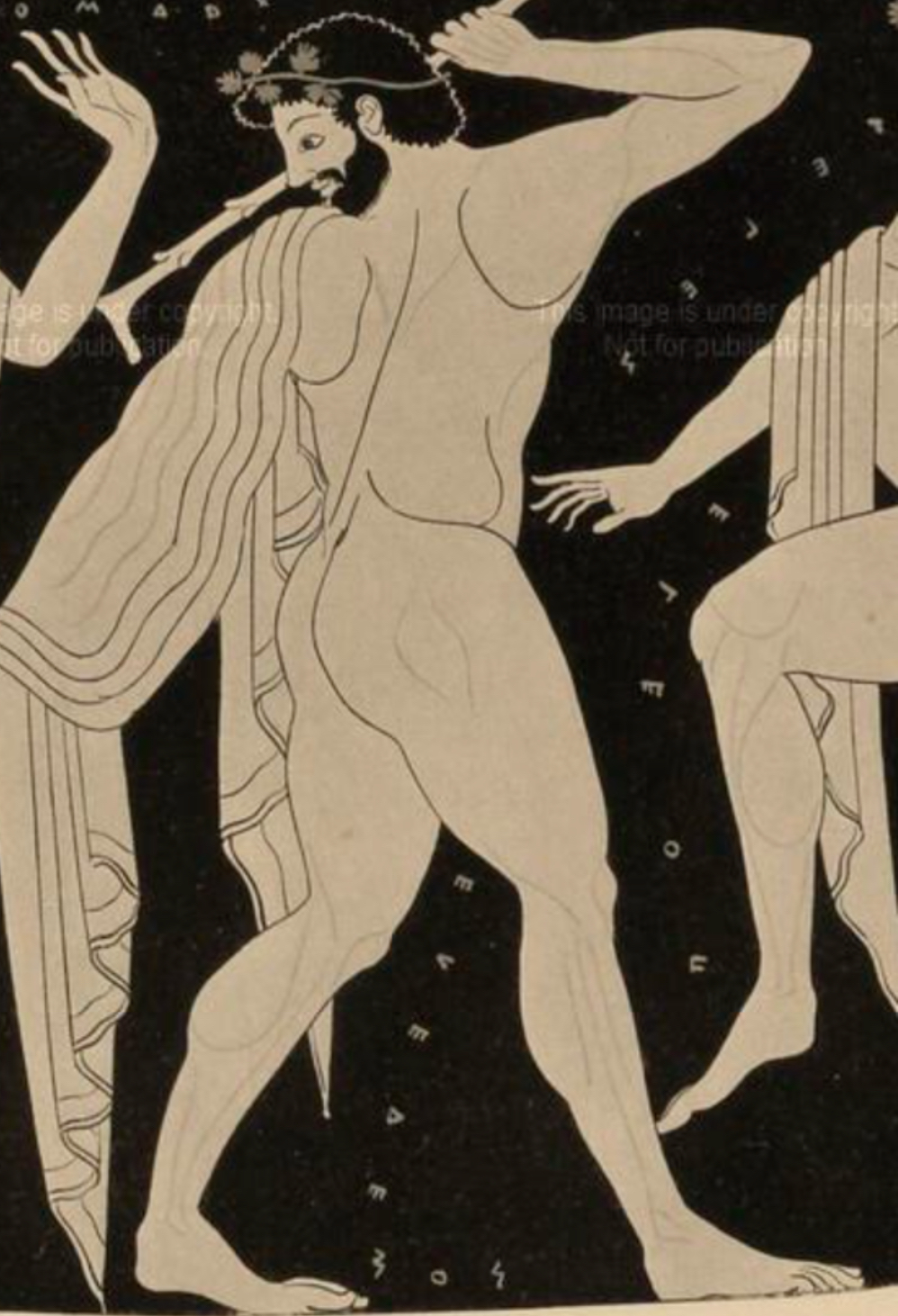
What does Woodford say about this central figure in particular?
‘Brilliantly drawn’
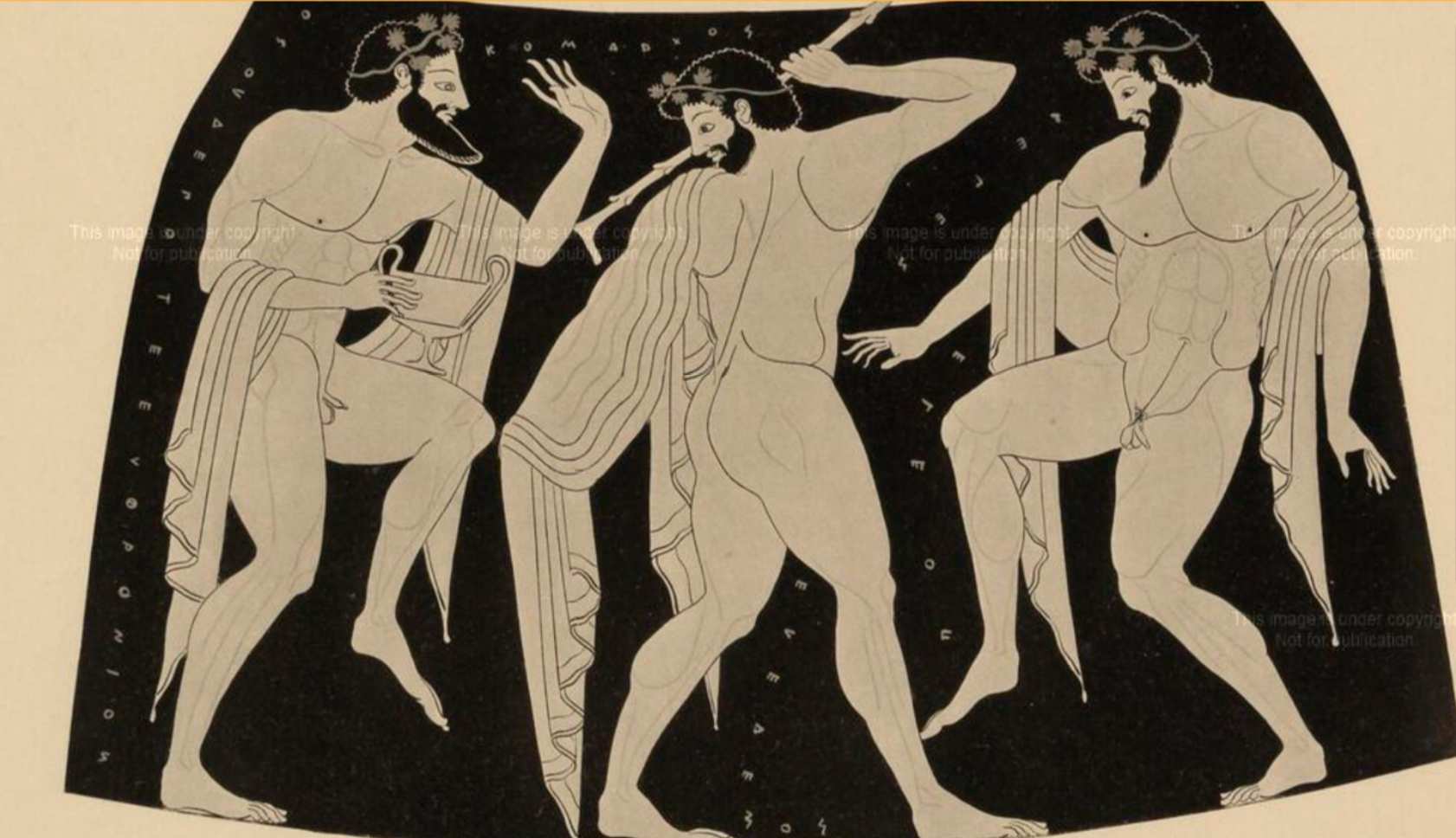
How is there variety and movement displayed in the 3 dancing figures?
Dancing and movement seen through asymmetric pectorals and asymmetric obliques (right figure). The different dynamic dancing poses creates variety.
How can we identify the figures?
Dipinti has been used to label them
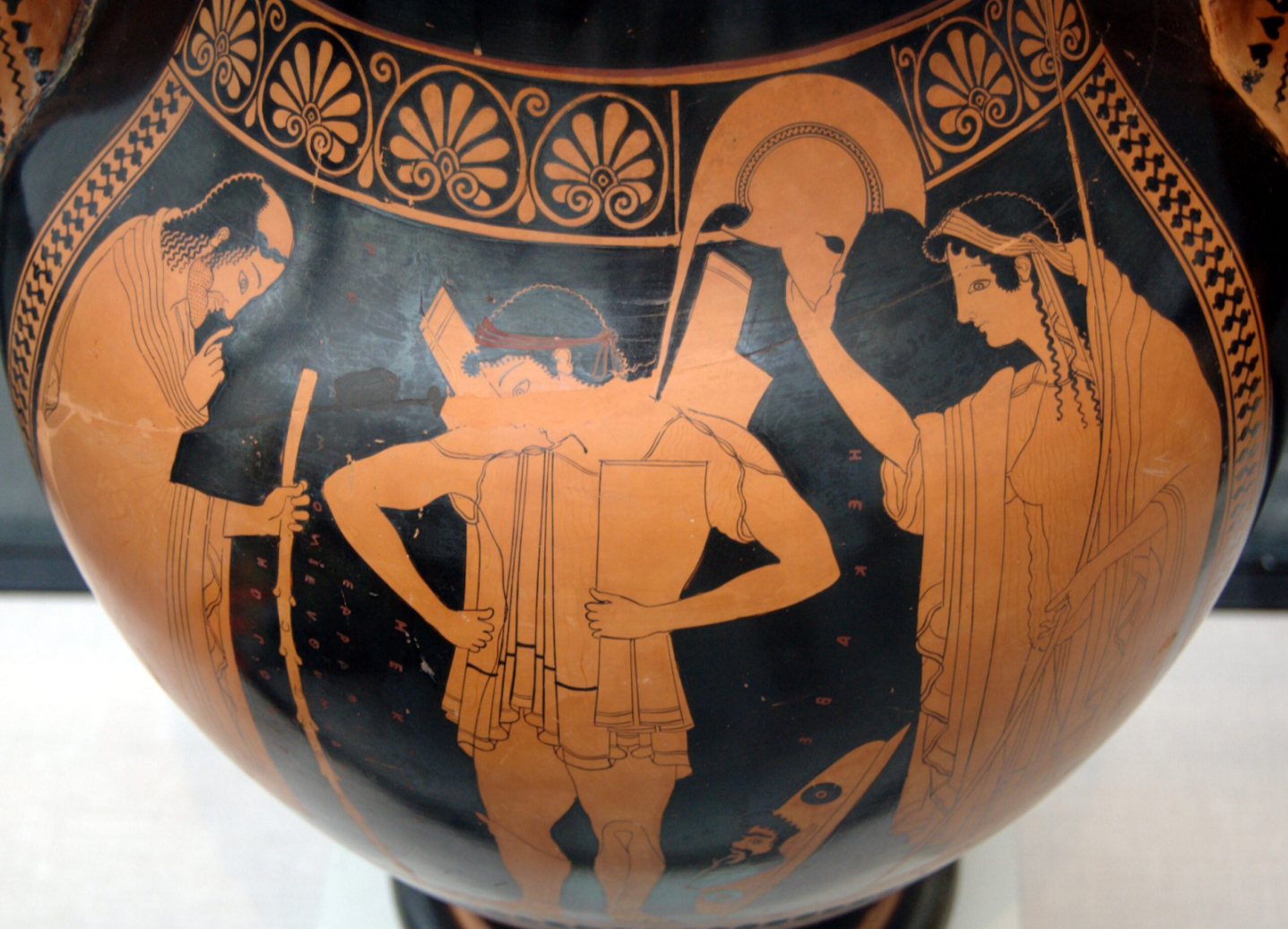
What is the scene depicted on the reverse of the pot?
A poignant scene of Hector putting on his armour being supported by Hecabe and Priam before he dies in battle against Achilles.
What does Robertson say about this pot?
‘Particularly impressive (are) the komasts (revellers)… one in a back view of surprising sophistication’
What does Moignard say about this pot?
‘The figure is achieved with great economy of detail and a neat control of its outer contour’
What does Williams say about this pot?
‘These Pioneers learned to foreshorten the limbs of their figures. They attempted new and more complex poses.’